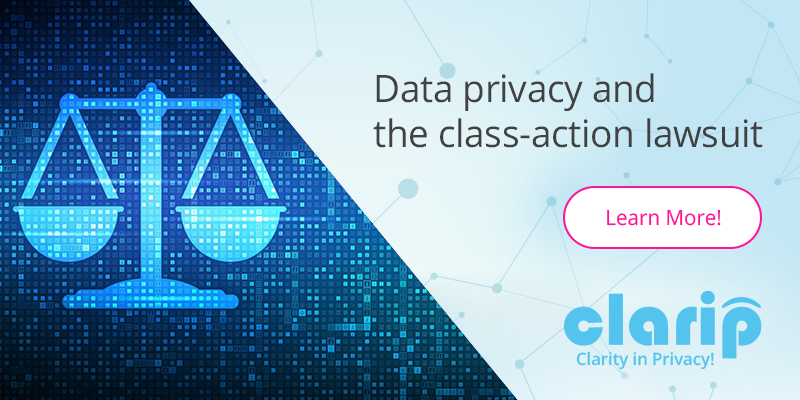Data Privacy and the Class-action Lawsuit

Class-action lawsuits inject a little bit of pragmatism into the typical litigation process. Often lawsuits revolve around an injured party, the plaintiff, and the alleged perpetrating party, the defendant. Sometimes there are multiple defendants, sometimes there are multiple plaintiffs, and sometimes there exists an entire class of plaintiffs.
The practice of law can be complicated. On average, the more players involved, the more complicated it gets. However, class-action lawsuits function to make things more cohesive and unified and ultimately save a lot of time. As opposed to having 50 different lawsuits involving the same defendant and the same issues, but different plaintiffs, class-action lawsuits effectively combine the 50 different lawsuits into a single lawsuit to resolve the same issues against the same defendant, but for all of the plaintiffs at the same time.
Even though generally, more parties in a lawsuit make it more complicated, in the case of class-action lawsuits, it makes things much less complicated in the aggregate, by resolving the issue once, instead of 50 or more different times. By the way, 50 is abnormally small for a class, classes can be hundreds, thousands, or even more people. The efficiency gain from a class-action increases the bigger the class is.
Another aspect of class-action lawsuits is that they increase the likelihood of redress of small-value harms. When you have been harmed in some way, but you think about the hassle that would be involved in finding a lawyer, and spending the time with them to describe all of the facts to them, along with the imposition of depositions and trial dates, it is very easy to let the harm slide. Any rational actor will bump into the same problem. They know they are being harmed, but it will require more from them to address the harm than to simply suffer the harm. On the other side, some actor is harming a lot of people, but is suffering no consequences for their behavior because none of the injured persons have been singularly harmed enough to do anything about it.
If the injured persons work collectively, the calculation changes. Instead of there being $500 on the line for a single person, there can instead be $500,000 on the line for a class of 1000 persons. That is enticing for attorneys to pursue, whereas a $500 claim isn’t. So instead of a lot of people suffering a small amount of harm and choosing to just endure it, they can instead address it and have the perpetrator held accountable for the harms they committed.
In the world of data privacy, harms typically are for small-dollar amounts. They are also typically not targeted. They usually affect a large class of consumers. Accordingly, they are often very well-suited to class-action lawsuits. There are class-action lawsuits for data breaches and there are class-action lawsuits under the Biometric Information Privacy Act (BIPA) in Illinois. When data privacy laws include a private right of action, as data breach laws often do and as the BIPA does, that opens the door for class-action lawsuits.
Due to the low-dollar amounts and numerosity of injured plaintiffs, class-action lawsuits help to ensure that data privacy laws are actually enforced.
Data privacy laws are seeing more enforcement and stricter enforcement as time goes on, particularly under the General Data Protection Regulation.
As the privacy landscape becomes more perilous its important to have privacy compliance solutions that are reliable. That’s where Clarip comes in. Clarip helps companies with automated data subject request fulfillment, data mapping, website scanning, consent management, vendor management, and much more. Visit us at www.clarip.com or call us at 1-888-252-5653 to learn more.
Email Now:
Mike Mango, VP of Sales
mmango@clarip.com
















